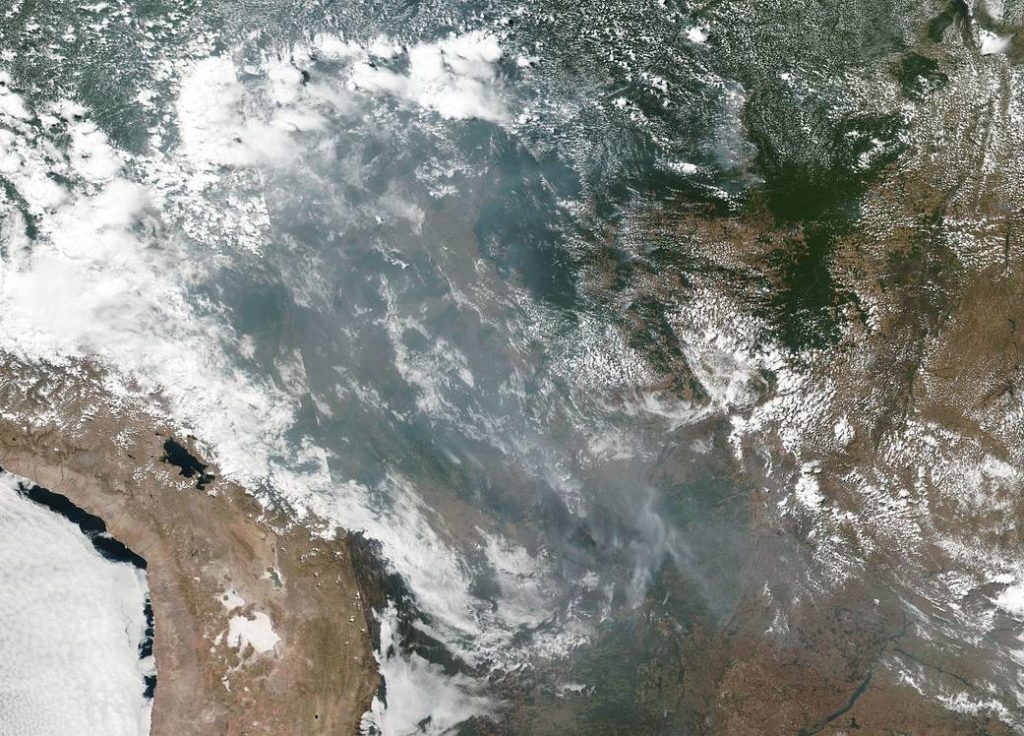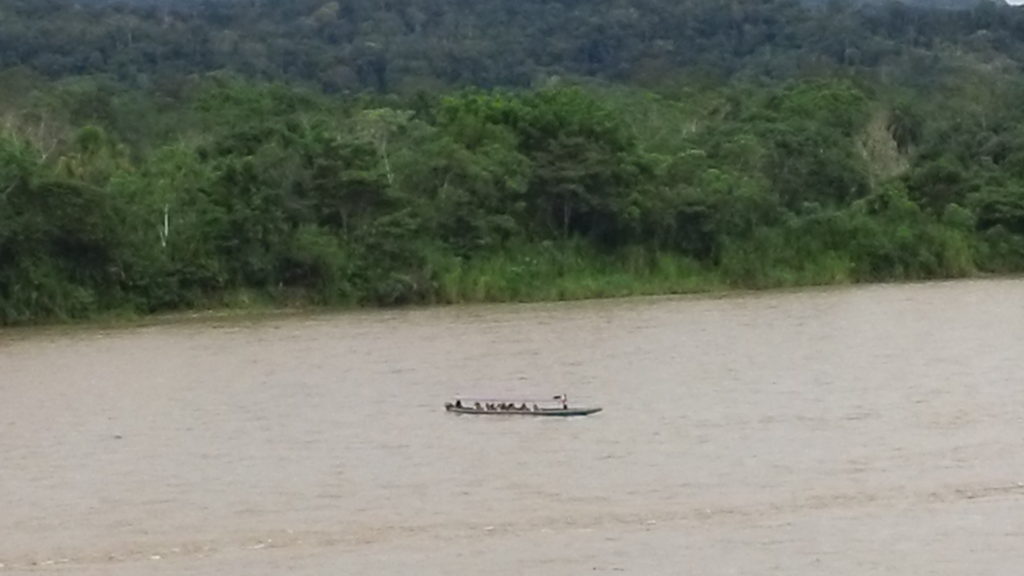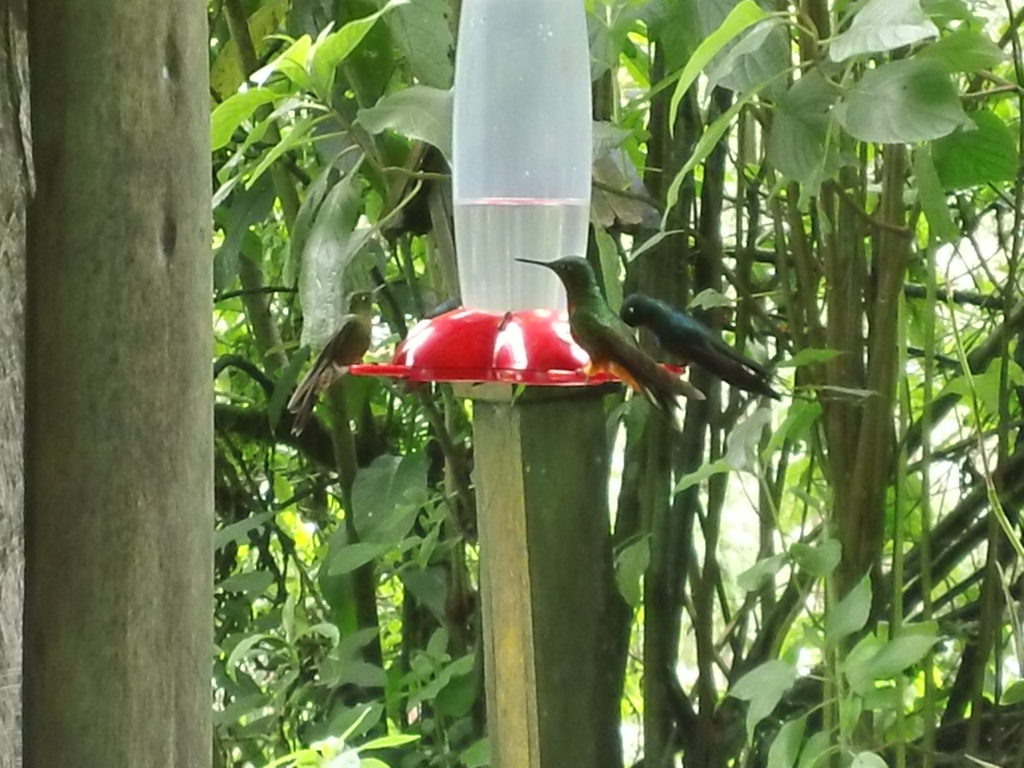
In a nostalgic piece a little more than eight years ago, I wrote:
Some of the most idyllic and memorable times of my early youth are the days and weeks I spent in the late 1940s with my parents and sister in El Oriente of my native Ecuador.
I was referring to Ecuador’s magnificent jungle region on the East side of the majestic Andes Mountains, the beginning of the Amazon rain forest basin — some parts still pristine — and one of the most biologically diverse regions on earth, “an ecological miracle.”

A place that has thousands of species of birds, butterflies and insects and is home to one of the largest profusions of colibris (hummingbirds) in the world.

A place that has 2,200 varieties of trees, a critical part of our planet’s “lungs.”
But trouble would soon be brewing in Paradise, and it would be spelled “O-I-L,” an abundant resource underneath the lush Ecuadorean rain forest — a resource that has been both a blessing and a curse to my native country.
Already in the 1960s, Big Oil “came barreling into this delicate ancient landscape… with all the subtlety and grace of an invading army…when it left, it left behind… widespread toxic contamination that devastated the livelihoods and traditions of the local people, and took a severe toll on their physical well-being.”
More recently, even larger oil deposits (approximately one billion barrels) were found deeper into El Oriente, in the Yasuní National Park, an even more pristine region, perhaps the most biologically diverse region on our planet: “a nearly 4,000-square-mile rainforest wilderness of incredible biodiversity and the ancestral land to two of the most isolated and ‘uncontacted’ indigenous tribes, the Taromenane and Tagaeri — a region so precious and so unique, that in 1989 Yasuní was designated a UNESCO ‘Man and the Biosphere Reserve.’”
In a bold initiative to save this treasure, then-president Rafael Correa proposed the “Yasuní-Ishpingo Tambococha Tiputini (ITT) Initiative, an unprecedented and innovative plan that would leave the oil in the ground at Yasuní (estimated to be worth $7.2 billion) if the international community pledged to pay for half of the oil’s value, $3.6 billion. The money would be used for the country’s sustainable social and economic development, for renewable energy, conservation and reforestation projects.
Sadly, after several attempts to salvage the plan, it eventually failed. Drilling rights were given to Petroamazonas and extraction began in September 2016 in a region that has been described as: “terra incognita, one of the beastliest, lushest, most fecund, abundant but unknown places on Earth.”
A few years ago, companies were already wiping out approximately 600 square miles of Amazon rainforest for the sake of oil production.
Add to that the thousands of square miles of rain forest destroyed every year for logging, agriculture and cattle ranching (“Twelve percent of what was once Amazonian forest – about 93 million acres – is now farmland”). And now comes an infrastructure plan by Brazil’s president Jair Bolsonaro that, if it moves forward, would deforest fully 40 percent of the Amazon rainforest.
But one does not have to wait for the implementation of Bolsonaro’s plan to witness the destruction of the rainforest as the nearly 77,000 wildfires that have raged — and continue to rage — in the Amazon rainforest so far this year (up 85 percent over the same period in 2018) are already causing catastrophic and irreversible destruction. Just scan the headlines:
• Human-caused Fires Are Destroying the Amazon
• Earth’s burning lungs: On Amazon’s rainforest fire
• Amazon rainforest fire: an environmental catastrophe…
• The Amazon rainforest is on fire. Climate scientists fear a tipping point is near
• Destruction of just 3% more of Amazon could have terrible effects worldwide, scientists say
• Brazil’s Amazon rainforest is burning at a record rate…“flames destroying one-and-a-half football fields of rainforest every minute of every day.”
My 2011 article was titled, “Ecuador’s El Oriente — Another Paradise Lost?”
I hope there will never be the occasion to remove the question mark.
Fortunately, several governments, organizations and individuals are providing financial and technical assistance to help control the fires and to save our rainforests.
Other organizations have, for years, been working very hard to protect and even regenerate our tropical rainforests.
One of these commendable organizations, “Rainforest Partnership,” happens to be located in my hometown, Austin, Texas.
To achieve its objectives, Rainforest Partnership works with the people of the rainforests in Ecuador and Peru, through community-based conservation projects to enable them to preserve their forests and “develop sustainable livelihoods that empower and respect both people and nature.”
One of the Partnership’s Country Directors “on location” in Peru, after traveling extensively through the Peruvian rainforests, shares her thoughts about the Amazon forest fires in a letter, “I am not shocked, I am not surprised.” Please read it here
While at Rainforest Partnership, please learn more about this organization and, more important, please consider making a donation to a very worthwhile cause.
Please watch the video below
















